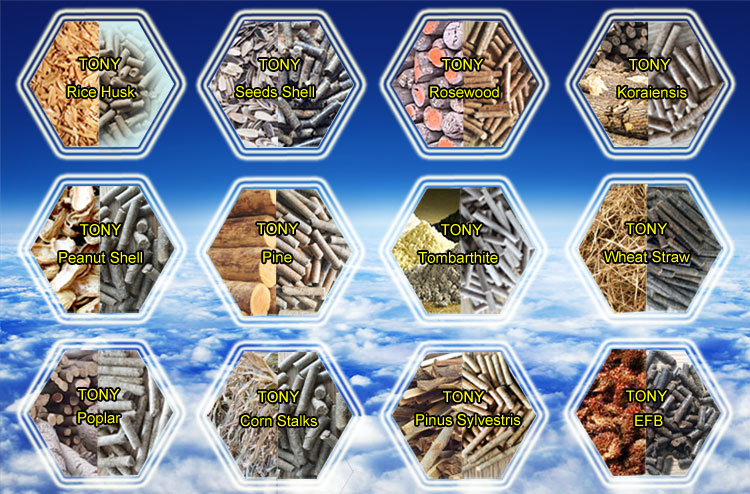Many friends who are engaged in the production of biomass pellet fuel are well aware of the requirements for raw materials of biomass pellet machine equipment. There are still many friends who are about to enter the industry but have only a vague understanding of the raw material requirements for biomass pellet machine. This makes it hard to avoid being confused when choosing raw materials. What kind of raw materials are suitable? What are the specific requirements for the raw materials entering the pelletizer for granulation?
In this article, TONY will take you on a deep dive into what kind of raw materials are suitable for granulation? What are the requirements for raw materials before entering the pellet machine?
NO.1: What biomass raw materials should be selected for processing biomass pellets?
The range of raw materials for making biomass pellets is very wide, so there is no need to rack your brains to choose them. Some common agricultural and forestry wastes we see, such as crop straw, can all be made into biomass pellets. For instance, common furniture factory scraps, various wood products, corn stalks, rice husks, rice straw, bamboo scraps, etc., can be formed without adding any additives.
The finished granules produced can reach 3,800 to 4,700 kcal/Kg (the specific calorific value is determined by the type of raw materials), making it an excellent alternative to traditional fuels. Processing some waste materials into fuel pellets not only solves the problem of difficult agricultural waste disposal, but also addresses the issue of energy consumption, bringing us considerable economic benefits. It can be said that it achieves multiple goals at once.

NO.2:What are the specific requirements for raw materials before enters the pellet machine?
(1) Particle size of raw materials
When a biomass pellet machine is pelletizing, there are certain requirements for the size of the raw materials. If the raw materials are too large or too small, it will affect the output and quality of the biomass pellet machine, and may even cause no output or fail to achieve the expected effect. For instance, as mentioned earlier, if the raw materials are made into 8mm finished pellets, then before the raw materials enter the pellet machine, we require that the particle size range be ≤5mm, which is what we commonly refer to as wood chips, wood shavings, and sawdust. When it comes to some straw, furniture factory scraps or tree trunks, we need crushing and grinding equipment for preliminary processing to meet the particle size requirements.
(2) Moisture content of raw materials
When using a biomass pellet machine for pelletizing, there are also strict requirements for the moisture content of the raw materials. No matter what kind of raw material it is, the moisture content must be controlled between 10% and 15%. If the moisture content is too low, it may result in dry in and dry out, and the pellets will not be formed. If the moisture content is too high, the particles will be prone to breakage or loosening.
(3) Composition of Raw materials
The TONY biomass pellet machine can mix and pelletize different raw materials. Biomass pellet machines are not limited to making pellets from a single type of raw material. They can also incorporate other types of raw materials, such as wood chips and straw, rice husks and wood chips, and even wood chips and carbon powder, etc. Our TONY pellet machines have all had successful cases.
The above is all about the selection of raw materials and the requirements for raw materials sorted out and released by TONY. I hope it can be helpful to colleagues who are learning about and investigating the industry. The most important point is that when choosing a complete set of production line equipment for wood pellet machine, straw pellet machine, and biomass pellet machines, don't forget our TONY pellet machine manufacturer.





















